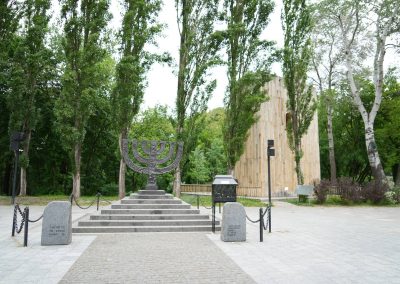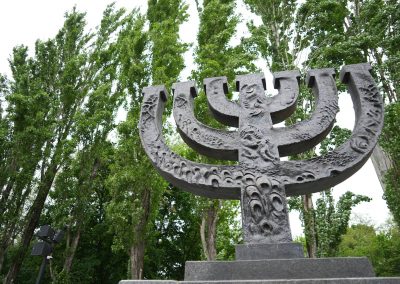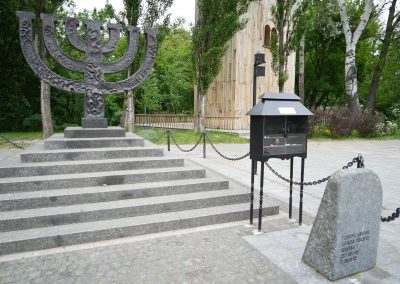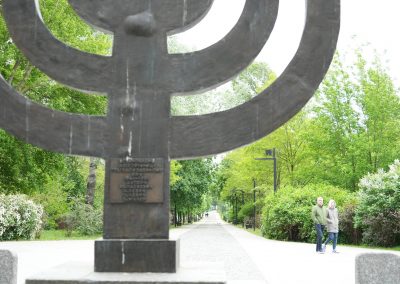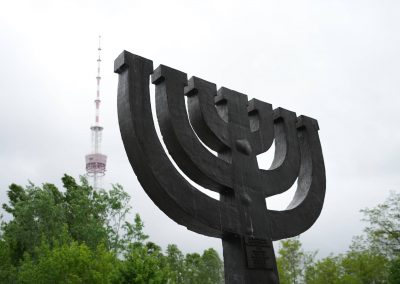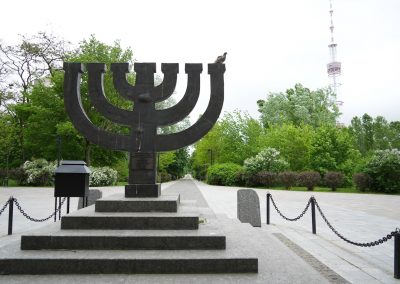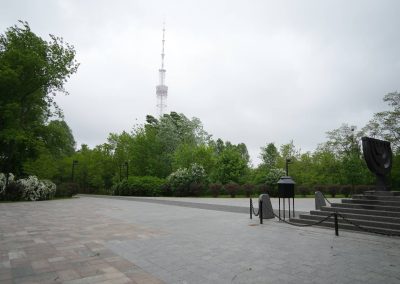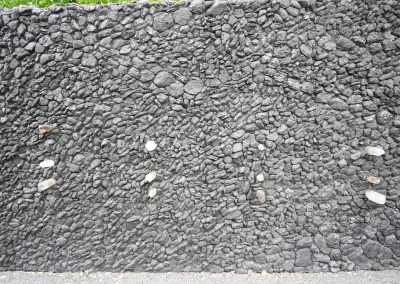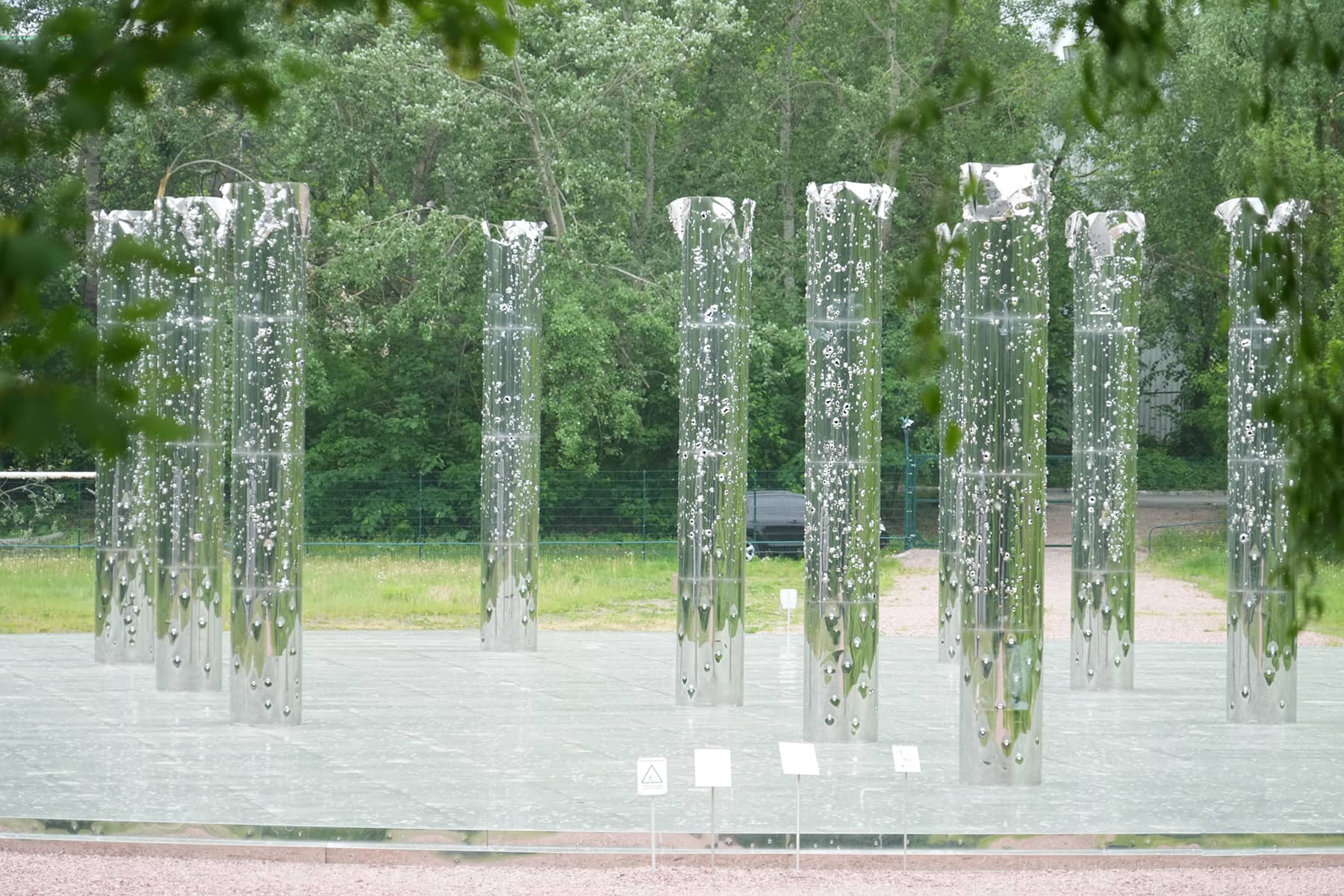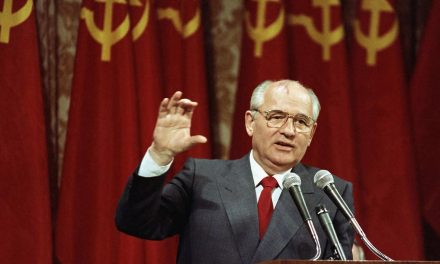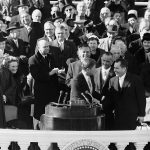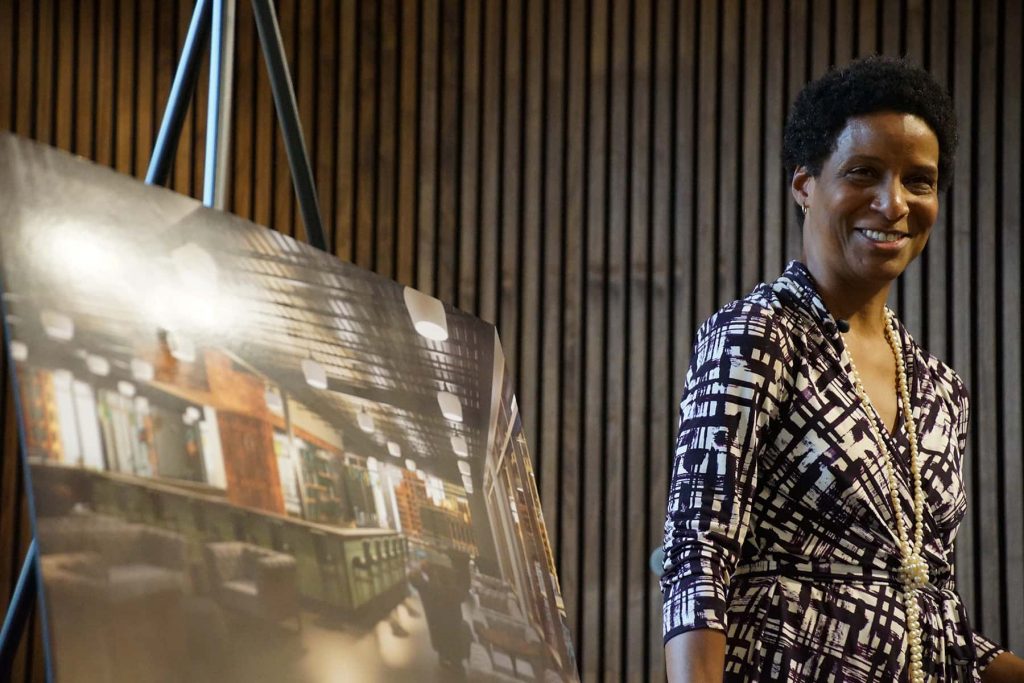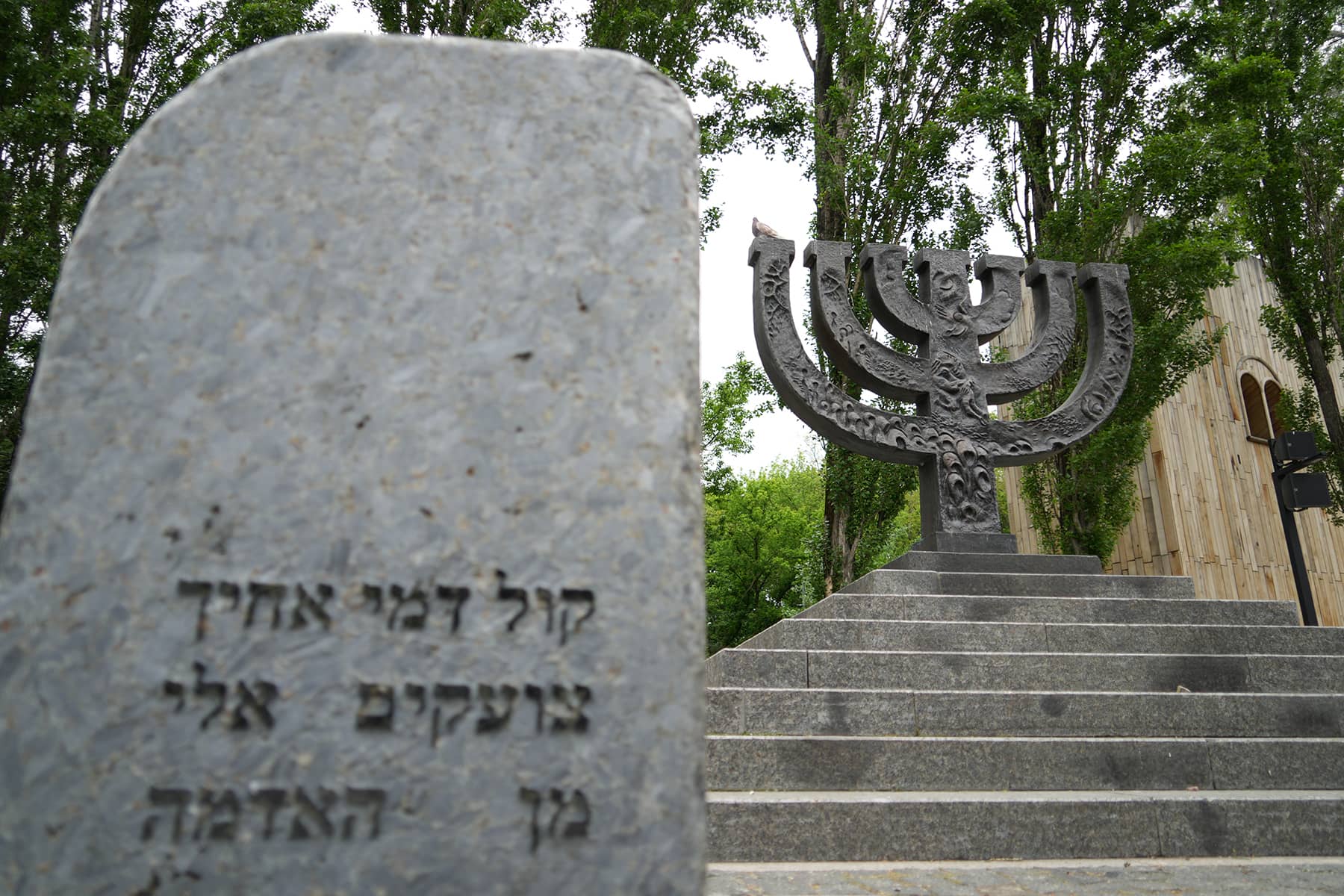
At the beginning of Putin’s unprovoked invasion of Ukraine, the Babyn Yar Holocaust Memorial Center was struck by Russian missiles that failed to destroy the nearby Kyiv TV Tower. Five civilians visiting the park were killed, and the TV tower has remained unscathed since. The act was a bloody reminder of Russia’s long history of terror and cruelty against Ukrainian Jews.
The Memorial for Babi Yar victims was inaugurated in Kyiv on October 6, 2021. It was designed to honor the dead of the Babi Yar massacre, considered one of the most horrific mass slaughters by Nazi forces.
Within 48 hours, between September 29 and 30 of 1941, nearly 34,000 Jewish men, women, and children were killed at the ravine in the Ukrainian capital. Nazi troops would go on to kill between 70,000 and 100,000 people at Babyn Yar between 1941 and 1943, including almost the entire Jewish population of Kyiv.
For the first time since World War II a memorial and research center was built on the site of the killing fields. The “Holocaust of bullets” remained shrouded in silence for decades, because of Ukraine’s domination by the former Soviet Union.
The Soviets tried several times to physically destroy the graves and delete the history of the site, in an effort to suppress any mention of the atrocities committed against Jews.
In the aftermath of the missile attack in March, President Volodymyr Zelenskyy responded by denouncing the Russian strike.
“This is beyond humanity. Such a missile strike means that for many Russians our Kyiv is absolute foreign. They know nothing about our capital, about our history. They have orders to erase our history, our country, and all of us.”
Previously to the installation of the memorial site, Zelensky had never called attention to his Jewish identity, or the fact that some of his relatives were murdered at Babi Yar.
“What is the point of saying ‘never again’ for 80 years, if the world stays silent when a bomb drops on the same site of Babyn Yar? At least 5 killed. History repeating…”
That Babyn Yar could be damaged or destroyed by an aggressive military attack by Russia went against everything the memorial stood for. But the significance of the attack goes deeper. It was painfully symbolic that the Russian dictator started attacking Kyiv by bombing the site of the biggest Nazi massacre in Ukraine.
© PHOTO NOTE: All the original editorial images published here have been posted to the Facebook page of Milwaukee Independent. That collection of photos contains the MI copyright and watermark for attribution, and may be used for private social media sharing. Do not download and share images directly from this page. mkeind.com/facebook
Series: Reports from Ukraine
- Reports from Ukraine: Traveling from Milwaukee to a country at war just to take a vacation from America
- Images from Ukraine: Latino artist travels to Irpin to paint mural inspired by "Echoes of Guernica"
- Images from Ukraine: Irpin residents welcome reissue of Russian Warship Stamp as latest sign of victory
- Stories from Ukraine: Wandering in the ruins of a shattered life after surviving Russia's invasion
- Images from Ukraine: Similar to the Alamo, martyred cities bought precious time to save a nation
- Stories from Ukraine: Tent camp offers shelter for displaced residents until Irpin can rebuild lost homes
- Images from Ukraine: Graveyards of Russian war machines show the scale of Putin's failure to seize Kyiv
- Images from Ukraine: Following the invasion convoy's 40-mile route and exploring an abandoned base
- Stories from Ukraine: Illegal weapons and proof of Russian War Crimes easily seen along streets of Irpin
- Images from Ukraine: How Irpin’s cemetery processed the staggering massacre of its local citizens
- Stories from Ukraine: Healing remains slow as Borodyanka residents recover from occupation
- Images from Ukraine: The deep scars of war remain visibly etched across the landscape of Borodyanka
- Interview with Oleksandr Markushin: Mayor of Irpin and the hero of a Hero City
- A Meeting of Sister Cities: Former and current Mayors of Irpin ask Milwaukee's business community for help
- Stories from Ukraine: Having a shared purpose helped Irpin's leaders protect the city and stop the invaders
- Stories from Ukraine: How Milwaukee helped a bakery feed hungry survivors in Bucha with fresh bread
- Stories from Ukraine: Bucha resident recalls how Russians turned neighborhood into a street of death
- Stories from Ukraine: How a mass grave of executions overshadowed accountability from Bucha’s leadership
- Images from Ukraine: Putin’s attack on Babyn Yar is a painful reminder of the broken vow of “Never Again”
- Images from Ukraine: An unexpected encounter with Jewish history and the bloody legacy of persecution
- Images from Ukraine: Listening to timeless voices of ethnic heritage etched in stone at Lychakiv Cemetery
- Images from Ukraine: The experience of attending a military funeral in Kyiv while children died in Uvalde
- Images from Ukraine: Stepping out of the fog of war to see the beauty of faith in ancient places of worship
- Images from Ukraine: The cities of Kyiv and Lviv were divided by history but remain united in identity
- Stories from Ukraine: Anya Nakonechna shares why the Lviv Opera is a symbol of her nation’s culture
- Images from Ukraine: A folk village where visitors can experience the life of past generations
- Images from Ukraine: Signs of renewal sprout from under Irpin’s rubble as city looks to the future
Lее Mаtz
Lее Mаtz
Milwaukee Independent editorial team for this special series: (UKRAINE) Lee Matz, photojournalist; Oleh Pinta, translator / reporter; Yaroslav Zdyrko, security / videographer; (MILWAUKEE) Halyna Salapata, logistics / translations.
Milwaukee Independent has reported on the situation in Ukraine since it was invaded on February 24. Coverage originally began with reactions and rallies from the local Ukrainian American community, and relationships with Milwaukee’s sister city of Irpin. Through partnerships and good journalism, sources were developed that enabled Milwaukee Independent to publish developments about the unprovoked war in realtime. In late May, a team from Milwaukee Independent spent nearly two weeks on the ground in Ukraine. The award-winning daily news magazine was the first and, at the time, only media organization to send staff into the country since the war began.
Reports from Ukraine: An extensive news series by Milwaukee Independent from a country at war



